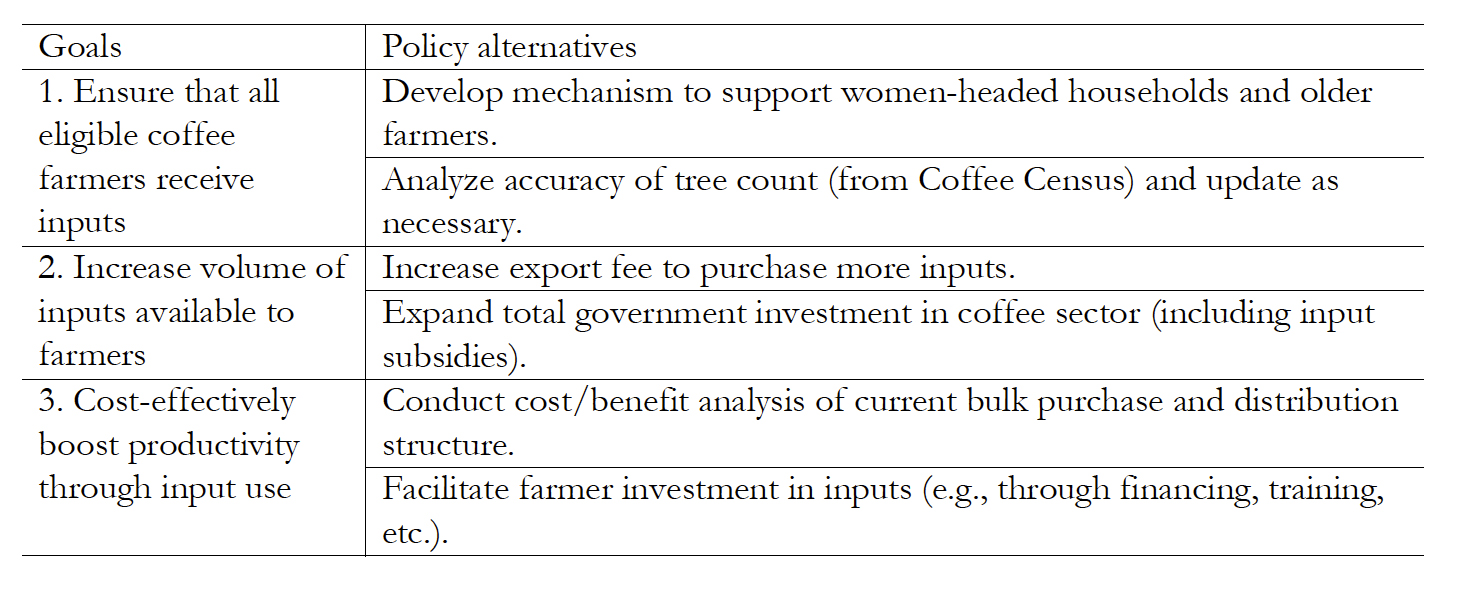Analysis of Distributed Coffee Inputs in Rwanda: Pesticide Access and Fertilizer Volume
DOWNLOADOctober 16, 2018 - Andrew Gerard, Daniel C. Clay, Maria Claudia Lopez, Kathryn Bowman, and Daniel Rukazambuga
Andrew Gerard, Daniel C. Clay, Maria Claudia Lopez, Kathryn Bowman, and Daniel Rukazambuga, 2018. Analysis of Distributed Coffee Inputs in Rwanda: Pesticide Access and Fertilizer Volume, Feed the Future Innovation Lab for Food Security Policy Research Paper 116. East Lansing: Michigan State University
EXECUTIVE SUMMARY
This report focuses on fertilizer and pesticide distribution to Rwandan coffee farmers. It addresses two issues: (1) farmers failing to receive distributed pesticide and, (2) farmers receiving uneven volumes of fertilizer per coffee tree. Rwanda’s coffee input distribution system is organized such that an industry group—the Coffee Exporters and Processors Association of Rwanda (CEPAR)—takes a fee from exported coffee and uses it to purchase bulk fertilizer and pesticide. CEPAR works with local actors to distribute inputs based on how many trees farmers have. This report uses a farmer survey and qualitative data to examine who receives inputs and at what volumes, and propose policy alternatives based on findings.
Findings from Research
Between 2015 and 2017, Rwanda’s coffee fertilizer and pesticide distribution system improved in its ability to reach farmers. The proportion of farmers receiving inputs increased, and gaps in terms of who receives inputs and at what volumes narrowed. However, several types of farmers remained less likely to receive inputs than others, or received lower quantities. Below find a summary of findings.
- In 2015, 69.4 percent of farmers used distributed fertilizer and 68.1 percent used pesticide. By 2017, this had increased to 79.3 percent for fertilizer and 74.0 percent for pesticide.
- Overall volume of inputs per coffee tree remains low, with farmers receiving approximately ¼ of the recommended dosage per tree of fertilizer and ½ of the recommended dosage of pesticide (TechnoServe n.d.; Rukazambuga 2018).
- Gaps remain in access to distributed pesticide; all else equal, women are around 39 percent less likely than men to receive pesticide.
- All else equal, older farmers receive less distributed fertilizer per tree than younger farmers. Non-cooperate members also receive less fertilizer per tree than cooperative members.
Policy Alternatives
We present alternatives based on findings derived from surveys, interviews, and workshops. Policy alternatives support three goals: (1) ensure all eligible coffee farmers receive inputs; (2) increase volume of inputs available to farmers; and (3) cost-effectively boost productivity through input use.




 Print
Print Email
Email

